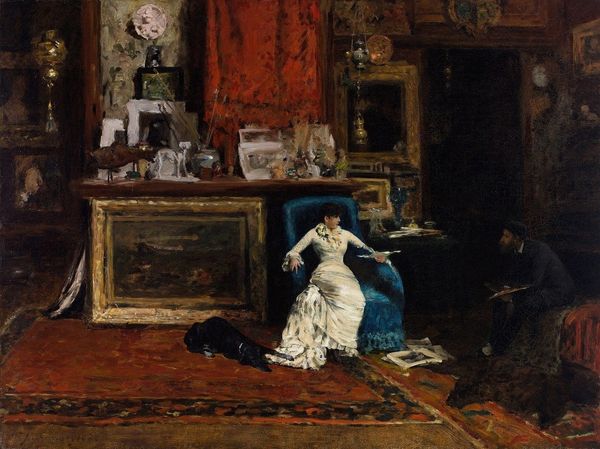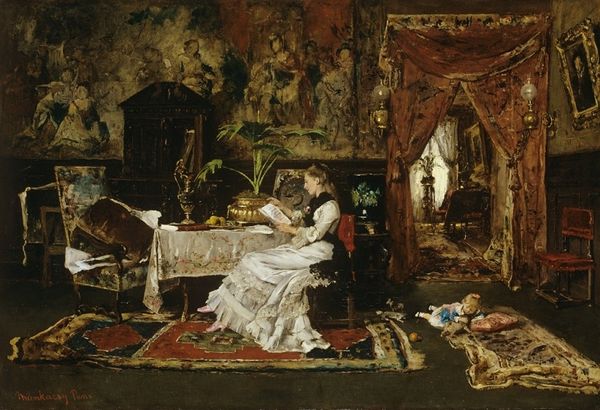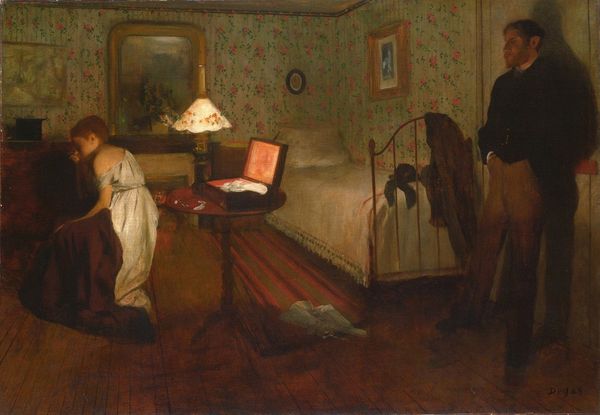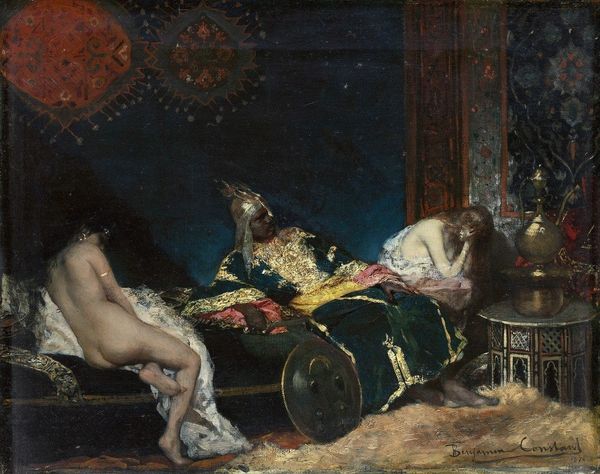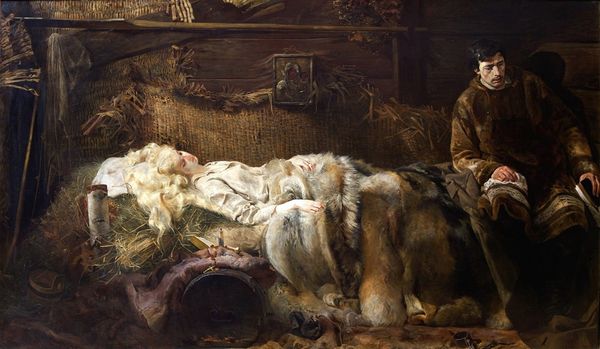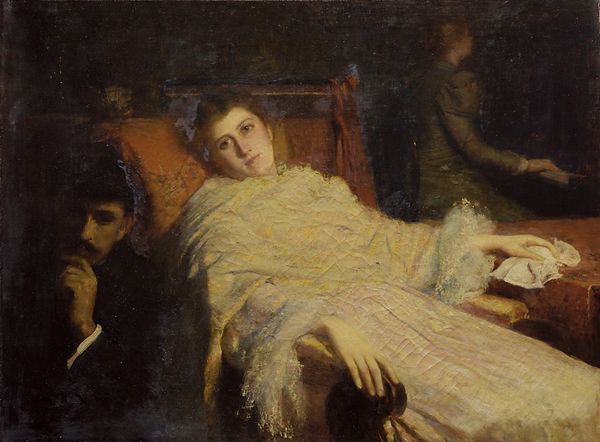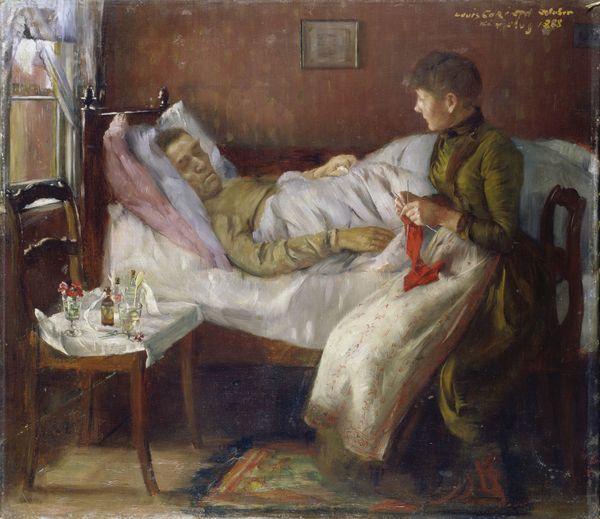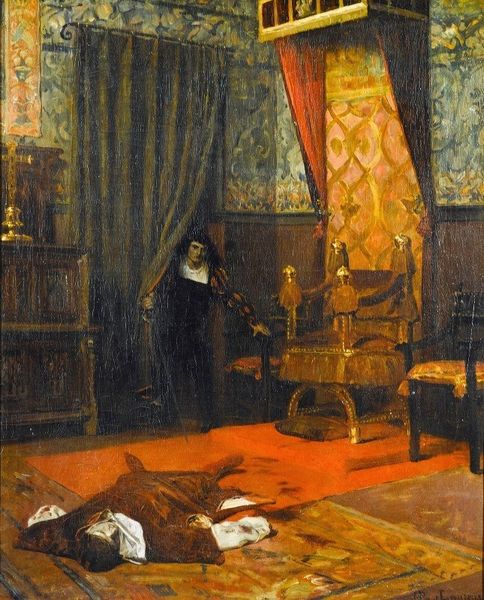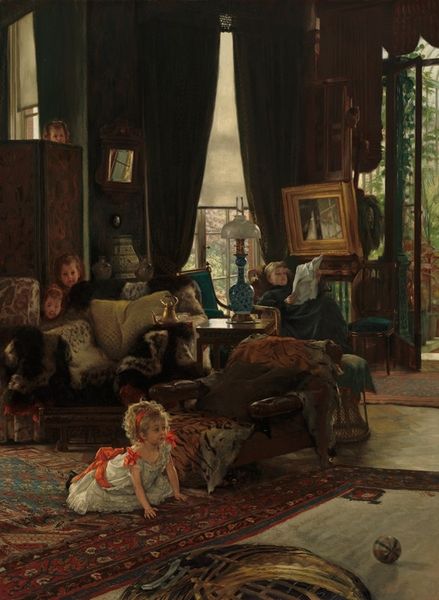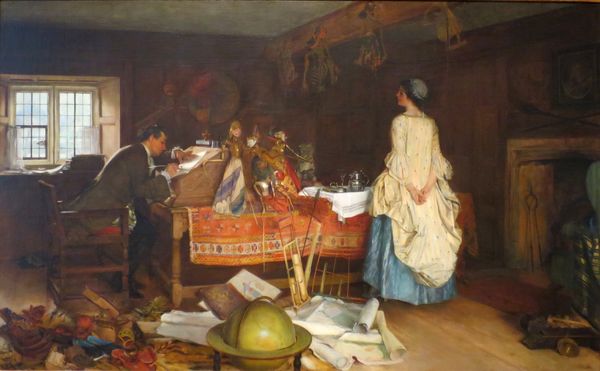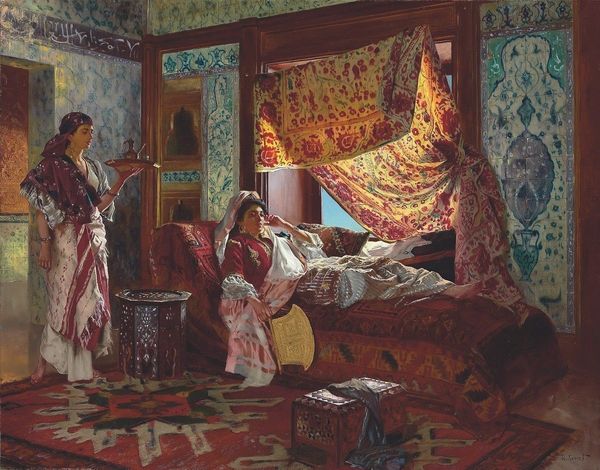
Copyright: Public Domain: Artvee
Editor: So, this is "Bouderie," painted in 1880 by Pascal-Adolphe-Jean Dagnan-Bouveret using oil paint. There's this immediate tension that jumps out. He's all sprawled out, carefree, and she looks...stiff, maybe? What's your read on this piece? Curator: Oh, it’s ripe with unspoken stories, isn't it? The air thick with that "something's not quite right" feeling. I get a definite "after the storm" vibe, wouldn't you say? I can almost hear the echo of slammed doors. Notice the dog skin on the floor? It seems very intentionally placed; for me it almost screams, look "We’ve forgotten what it is to be natural!" Or that screen, a floral, frivolous burst amidst the heavier tones, which creates a bit of division between them and makes us focus our eyes upon the two. It also brings this idea about relationships within painting. He has the vibrancy of the foreground, she almost melds with the background. Editor: Wow, that dog skin thing never even occurred to me! It’s fascinating how that domestic element amps up the relational tension. Do you see the painting as more romantic, as per the metadata, or does it read as straight-up realist, focusing on these specific individuals and the setting? Curator: "Romanticism" and "Realism" were strange bedfellows, weren't they? This has that eye for detail of the Realists, definitely. He captures the way light catches the folds in her dress, his somewhat smug repose... But under it all, isn't there that Romantics' yearning for *something more*? Maybe something irretrievably lost? He painted an image to what they once were and where they ended up; I almost feel this separation is to enhance his mind as we have to keep asking “why!”. The romance in life, a genre within our history, an image portraying time. It's a clever blending. Editor: Okay, now I'm seeing it as both! It’s not just a portrait, it’s a *situation*. This conversation totally shifted my perspective. I went from thinking “domestic squabble” to, well, something way more complex. Curator: That’s the joy of art, isn’t it? Seeing the familiar with new eyes. Letting a piece nudge us towards unexpected corners of ourselves.
Comments
No comments
Be the first to comment and join the conversation on the ultimate creative platform.

